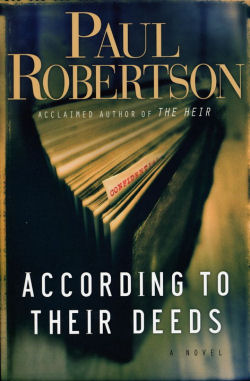|
A
scene near the beginning of Alfred Hitchcock’s movie To Catch
a Thief has Cary Grant standing in a restaurant kitchen. A
dozen or so men are working in the kitchen, and they’re a nasty-looking
bunch.
They don’t like him (watch the
movie to find out why), and the tension is pretty strong with their
hostile stares alone. But Cary Grant isn’t about to back down.
Then the camera jumps from one
point to another, and we see the subtle actions and gestures of the men
threatening their visitor. The tension builds.
Finally, the biggest, ugliest
guy grabs a white porcelain plate from a stack and breaks it on a
table. The piece in his hand is a jagged weapon, and he advances on
Grant. The others begin moving in. The danger is palpable.
But our protagonist still
doesn’t back down. We see him take hold of the neck of a bottle of
wine—just the way he holds it looks ominous.
We know what’s going to happen.
The image of the plate being broken is fresh—the timing of the scene
precise. He’s going to break the bottle—we can already see the broken
glass, imagine the lunge.
But wait. He suddenly tosses the
bottle to the man wielding the plate-weapon!
Startled, he reflexively drops
the plate shard to catch the wine bottle (this restaurant is in France,
and a bottle of wine is not carelessly shattered). Completely
flustered, the attacker cradles the bottle, and the whole scenario is
over. The other men laugh, while Cary Grant makes a smooth exit.
It’s not what we expected.
The climax point of a tense
sequence is one of the most valuable moments in a plot and should be
used to its greatest effect. Most writers know the basics: a nice,
long, slow setup; mounting tension with shorter sentences and sharper
verbs; and bang! The climax.
What a perfect place for
something a little different.
Like a sudden shift in the plot.
The opposition is trying to eliminate the hero. For the last half of a
chapter, a mysterious stalker has been following him through a dark
alley. Finally he sticks out his hand to grab him and says, “I have the
package from Dimitri!”
Or, “You’re under arrest!”
Or, “Hi, Dad!”
Any one of these would be a new
direction for the plot. Besides not being what the
reader was expecting, it also is
something the reader wasn’t expecting. It can have
a much stronger effect than discovering new information by simply
opening a letter or getting a phone call.
This
doesn’t apply only to suspense. For example, if a young woman is going
to learn that her boyfriend wants to break up with her, it would be
more powerful to build up to the revelation with some suspense tactics.
Have her get ready for the big date, build up her expectations, move to
the shorter grammar and faster vocabulary, and then when the reader
just knows it’s going to be a wonderful, romantic scene, wham! It’s
over.
|
This isn’t an original idea, of
course. But in plotting out a storyline, a writer can specifically
choose those important twists, key moments, and frame them in climax.
Whatever is going to happen to the character, build up an expectation
of the opposite and create a dramatic moment, and then when the
reader’s attention is fully engaged—boom!
Of
course, sometimes the climax should
be just what the reader is expecting: The feckless victim is done in
just as the suspense build-up leads the reader to believe. In fact, it
would become predictable if the climax was always unpredictable.
But even a standard build-up and
climax can be shifted or augmented. One way would be to build up to the
point, then create a sudden, momentary pause before the final action.
The movie Guns of
Navarone, from Alistair MacLean’s
World War II novel, is about British commandos trying to destroy a set
of massive German guns overlooking a strategic Aegean Sea route.
Gregory Peck, David Niven, and Anthony Quinn need to set bombs in the
fortified caves to explode the big guns’ ammunition depot and destroy
the whole place; but their fuses have been wrecked. They can’t just set
the timer for ten minutes and escape.
Therefore, they set the bombs to
go off when the Germans use the elevator that lifts the massive shells
into guns. Meanwhile, of course, a bunch of British warships have to
get through the channel.
The heroes set their bombs and
escape, the ships start into the passage, and the German guns begin
firing on them. Every time they fire, the elevator runs down to pick up
more shells and just barely misses the trigger for the bombs. And each
time the guns fire, they’re getting closer to the ships. Over and over
the elevator just misses the trigger.
But finally, when the next shot
is sure to hit the British ships, the elevator hits the trigger and the
whole mountain explodes.
Those repeated pauses—build-up
and let-down, build-up and let-down—are far more tense than the bombs
being triggered the first time.
So don’t waste any bit of
suspense—use it all, use it in every place it can be used, and use it
in unexpected ways.

|









